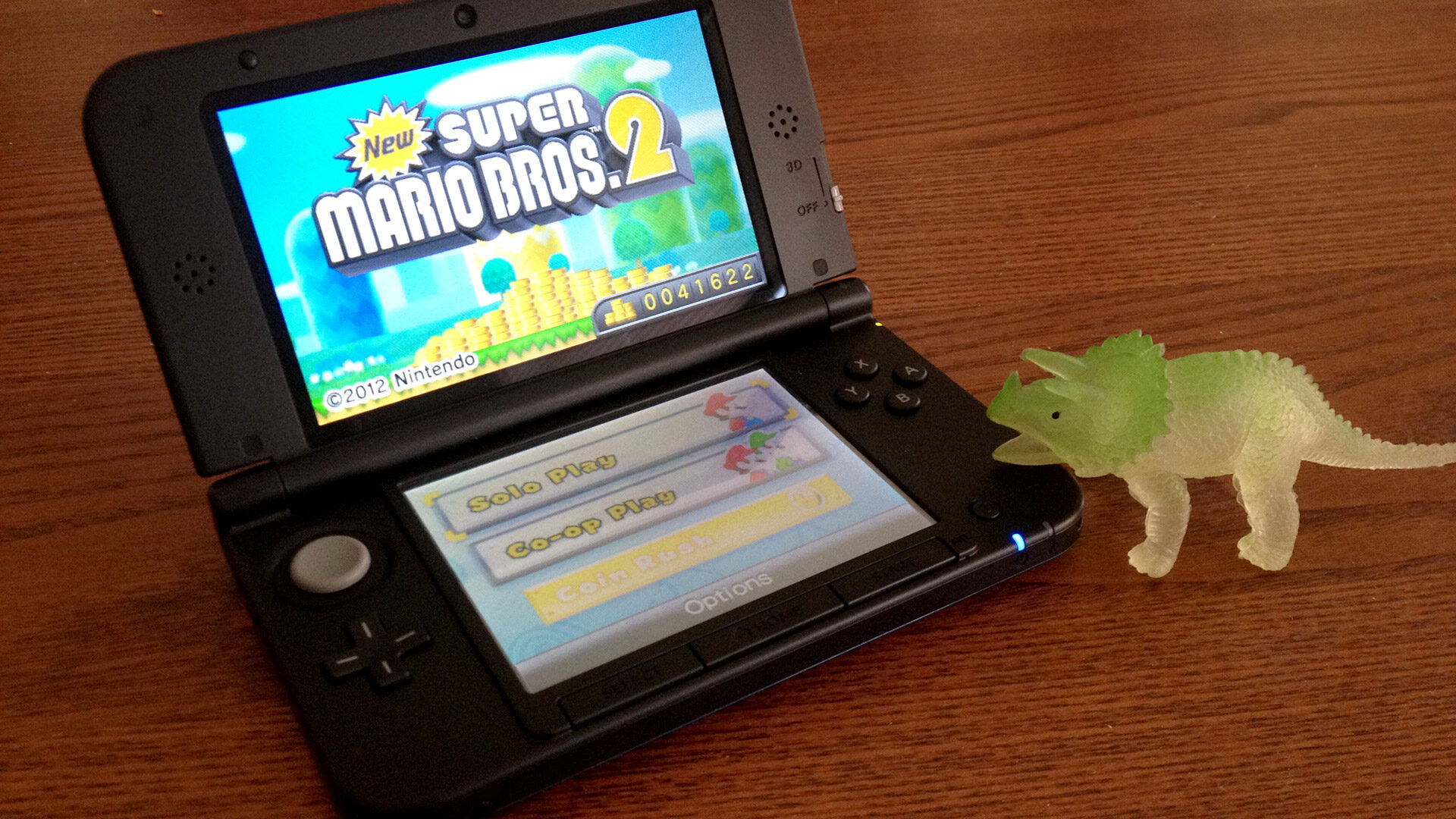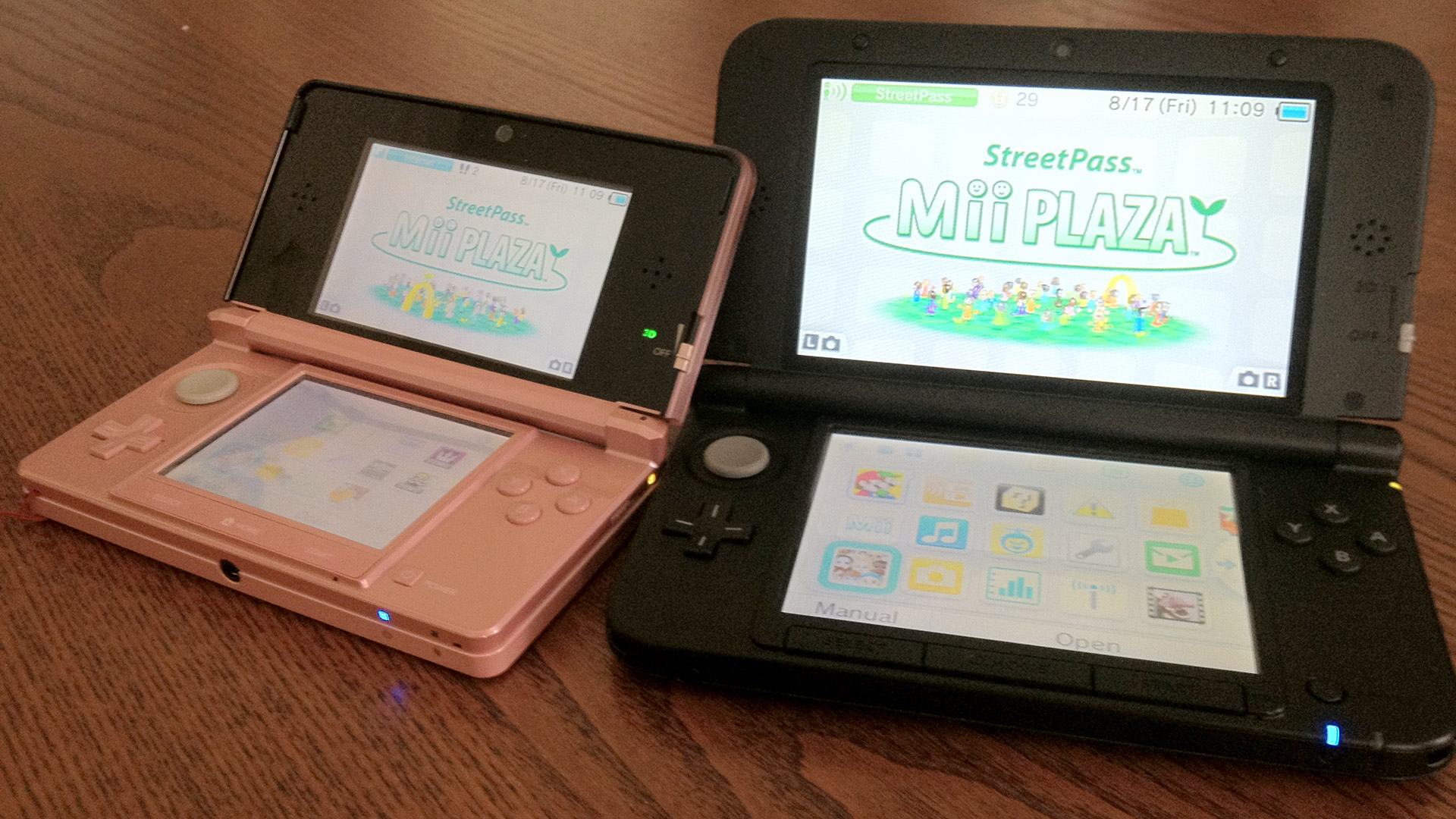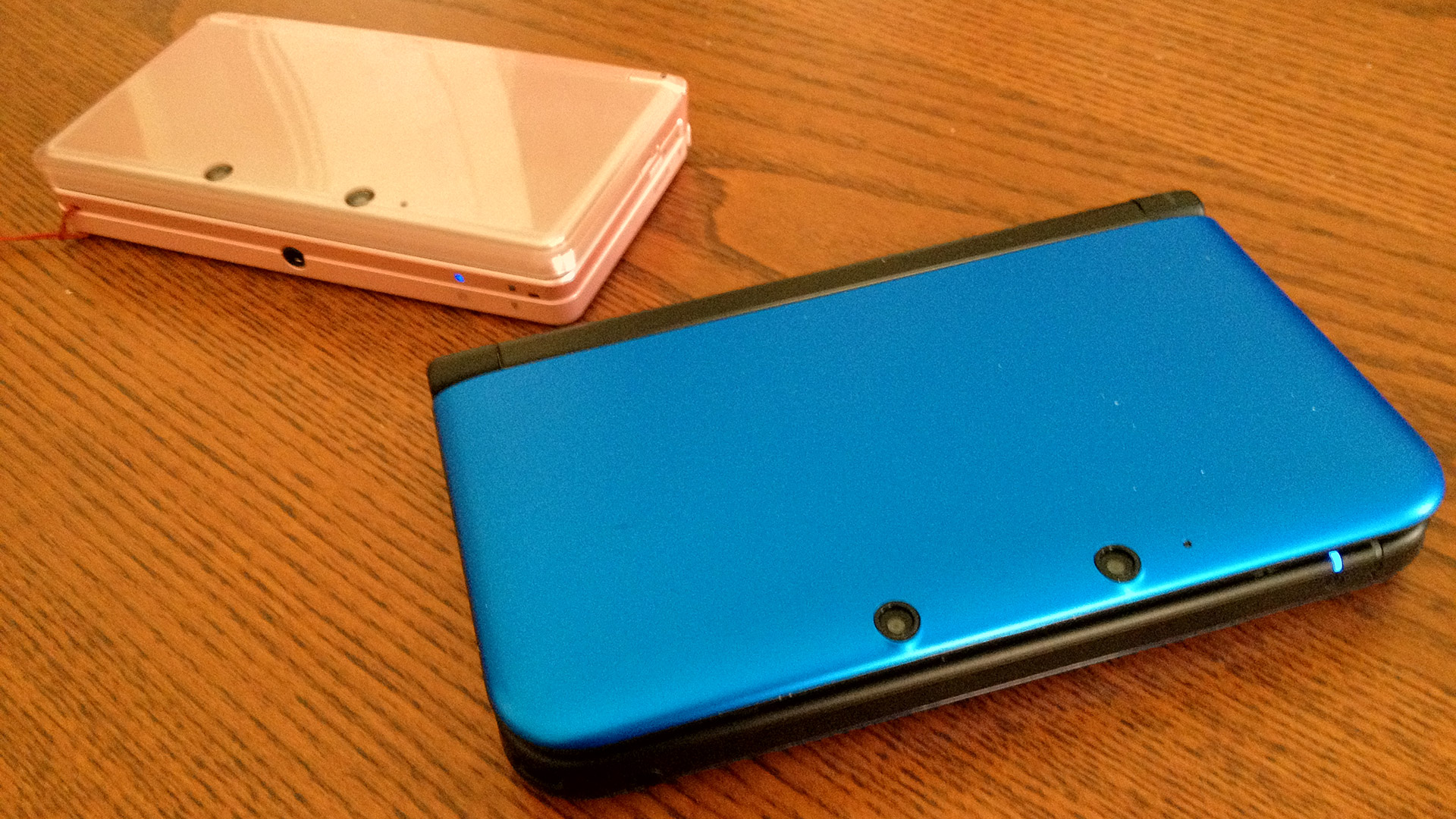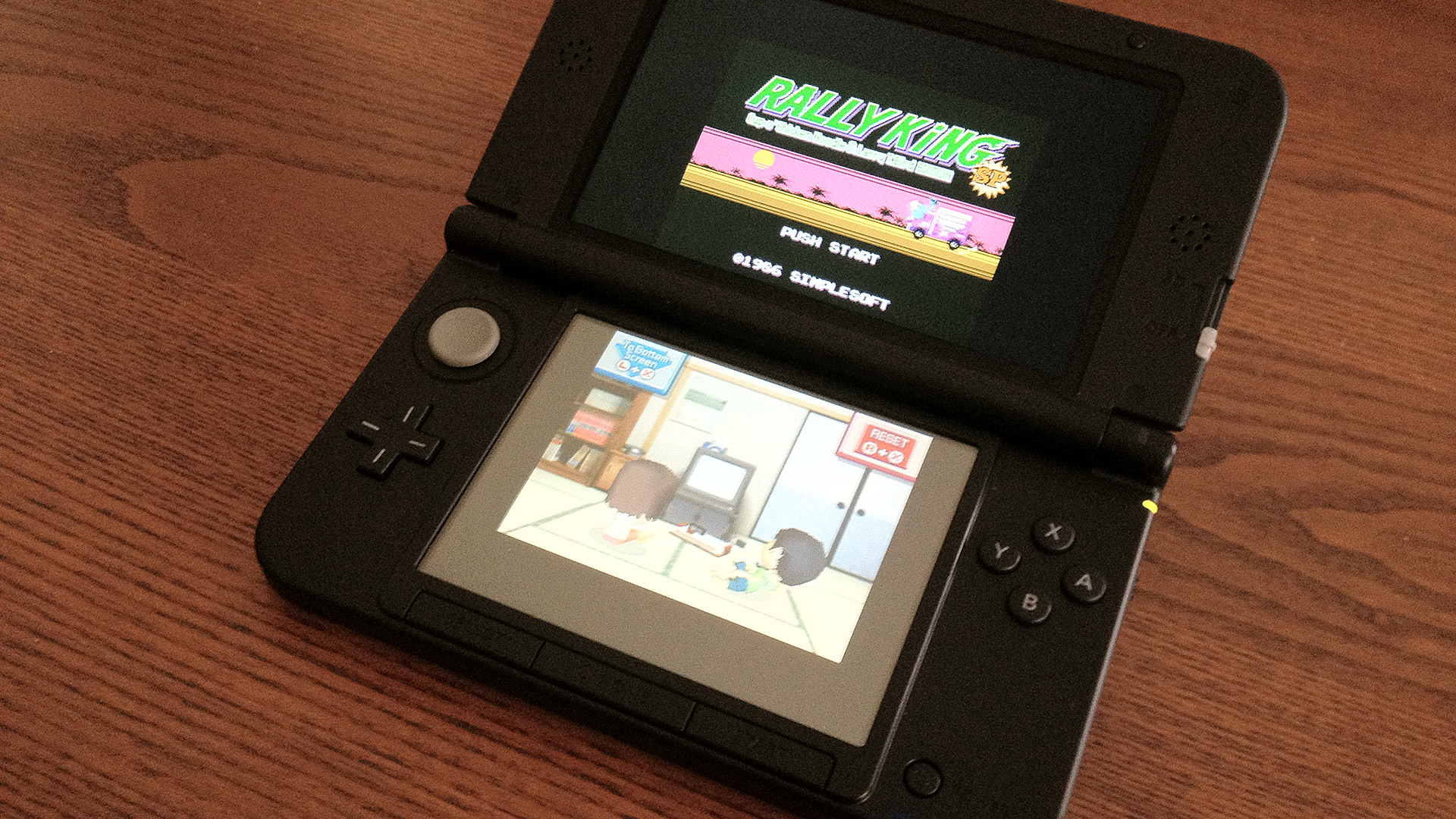A Hands-On Look at the Nintendo 3DS XL
I didn’t want to like the 3DS XL.
That isn’t meant to be any insult to Nintendo or their current handheld platform, just to be clear. I didn’t want to like the 3DS XL because I’ve come to really adore my regular old 3DS, and I didn’t want to feel like it had suddenly become inferior to that shiny new product just hitting shelves.
I had plenty of arguments ready in my head for why I wouldn’t like Nintendo’s new super-sized revision. I like the smaller, more compact nature of the regular 3DS; what do I need with some gigantic portable gaming system taking up extra room in my bag? And call me crazy, but I’ve come to like the kooky design of the original 3DS; in comparison, photos of the 3DS XL made it look far plainer and cheaper-looking.
Getting my hands on the 3DS XL for the first time confirmed my suspicious—the thing is huge! Well, you know, huge in comparison to the original 3DS. I still remember trying the similarly sized DSi XL after it came out—it felt like an interesting option for those who cared more about screen size than portability, but an option that would never be the standard choice to make when buying the system. At first, I assumed that I’d walk away from the 3DS XL thinking the same thing.
Of course, once you get past the initial difference in overall hardware heft, by far the biggest and most noticeable upgrade in this new revision is its screens. The 3DS XL’s top screen has been bumped up to 4.88 inches, versus 3.53 inches on the original 3DS. On paper, this may seem like not a huge difference; in practice, it absolutely is. The new screen size—on both of the XL’s screens, but especially its top screen—is almost shocking at first and makes one heck of an impact. When Sony introduced their PlayStation Vita, its 5-inch screen dwarfed the 3DS’ displays. With the 3DS XL, Nintendo’s offering can now go toe-to-toe with the Vita screen size–wise—and that’s before taking into account the bottom touchscreen.
Now, obviously, the 3DS XL doesn’t feature the stunning OLED display that the Vita does—nor does it have the overall resolution. Some have complained about the lack of resolution increase coming along with an increase of the physical size of the 3DS XL’s screens, but it was ridiculous to ever expect such things. Had Nintendo upped the resolution of the 3DS XL’s screens, it would’ve broken compatibility with all 3DS games already released, and it would’ve required developers to start crafting games to run in two different resolutions.
So, we’ve got screens with the same number of pixels, but now due to an increase in physical size, those pixels are also bigger. The result? Compared to the original 3DS, it’s far easier to see each individual pixel of the 3DS XL’s screens, and games that were naturally smoothed by the 3DS’ smaller displays now have more noticeable rough edges. This difference will be easy to see if you’re picky about visual quality on a technical level (like I am), or if you sit the original 3DS and 3DS XL side-by-side to do a comparison.
The thing is, it didn’t take me long to forget about this difference—and, once I did, I came to appreciate the screens on the 3DS XL far more than I ever thought I would. At this larger size, games pop to life more than on the original 3DS, and it’s easier on the eyes to play for longer sessions. Speaking of strain, I’d also swear playing games in 3D is less stressful on the eyes when at this larger size; it could be because on the 3DS XL, that 3D effect doesn’t quite seem as dramatic as it does on the smaller 3DS screens. Instead, it feels more natural—so it both strengthens the overall effect while also making it easier to tolerate physically.
There’s one other important upgrade that comes with the 3DS XL’s larger displays: DS playback. Personally, I wrote the 3DS off when it came to playing DS games—having them blown up to full size on the 3DS’ screens made graphics fuzzy, and running DS games at their original resolution produced visuals that felt positively tiny. With the 3DS XL, size actually does matter. Running DS games fullscreen will still produce upscaled graphics, but if you run them at original resolution, the physical size of the game screens are actually slightly bigger than what we had on the DSi. Yes, you’ll have to deal with black borders on three sides of each screen—but with the 3DS XL, you now have a 3DS that could legitimately replace your old-school DS.
The rest of the 3DS XL comes across as if it was born from a checklist of what people didn’t like about the original 3DS. Corners and edges have been smoothed and rounded, so the overall unit feels better in your hands. The top screen lid now has a few positions it’ll click and lock into, unlike the original 3DS (which has a lid that can easily fall closed unless it’s at its most-open position). The absolutely terrible Select/Home/Start buttons of the 3DS have been replaced by nice, actual buttons on the 3DS XL. The stylus now slides into the system on its right-hand side—back where it belongs. The 3D slider will now lock into the off position, and the circle slide pad has seen a minor upgrade over that on the 3DS.
There’s still those two personal concerns that I had about the 3DS XL, however: the larger size of the system overall, and its design. I thought the noticeable increase in physical size for the 3DS XL would bother me, but surprisingly, it didn’t for long. Yes, it’s bigger, and the system has seen a slight increase in weight over the 3DS. Unless you specifically carry your 3DS around in a pants pocket, however, the negatives of those increases are far outweighed by the positives the 3DS XL brings with it. And its design? I was wrong. In person, the system actually had a nice, polished look to it, I’m glad to have the matte finish back, and, man, did I miss the two-tone color scheme for Nintendo handhelds! Our blue-and-black unit looks pretty sharp, and I’m guessing the red-and-black does as well.
As I said at the start, initially, I didn’t want to like the 3DS XL—but I do. I do a lot, enough to make me wish I had one to replace my 3DS. My poor little 3DS hasn’t done anything wrong, and it’s still a great system—it’s just that the 3DS XL makes the 3DS experience so much better. With the DSi XL, it was an option that was there if you wanted it, but was something you didn’t feel like you needed to have a fulfilling DS experience. Here, the 3DS XL feels like the experience the 3DS always should have been, and I can absolutely see this becoming the “main” flavor of the system.
And, now, the big question: Should you buy one? It’s hard to tell anybody who already has a perfectly fine 3DS to spend $200 to get a replacement system. Here, though, I might just do that. If you’re a fan of the 3DS at all, trading up to a 3DS XL would be a step absolutely worth taking. The upgrades it brings will give new life to your 3DS library, and you’re also getting hardware that can properly take you back to the DS era. Having had this chance to use our office 3DS XL for a while now, it’s going to be painful going back to only having my normal 3DS around—as will the wait for a 3DS XL color variation that’ll make me finally break down and buy one for my own.
If you don’t have a 3DS yet, but are thinking about getting one, there’s next to no situation in which I’d recommend the original 3DS over the 3DS XL at this point. For a measly $20 more, you’ll be getting a system that’s not only better, but will also provide you a far richer experience in the world of handheld gaming.



